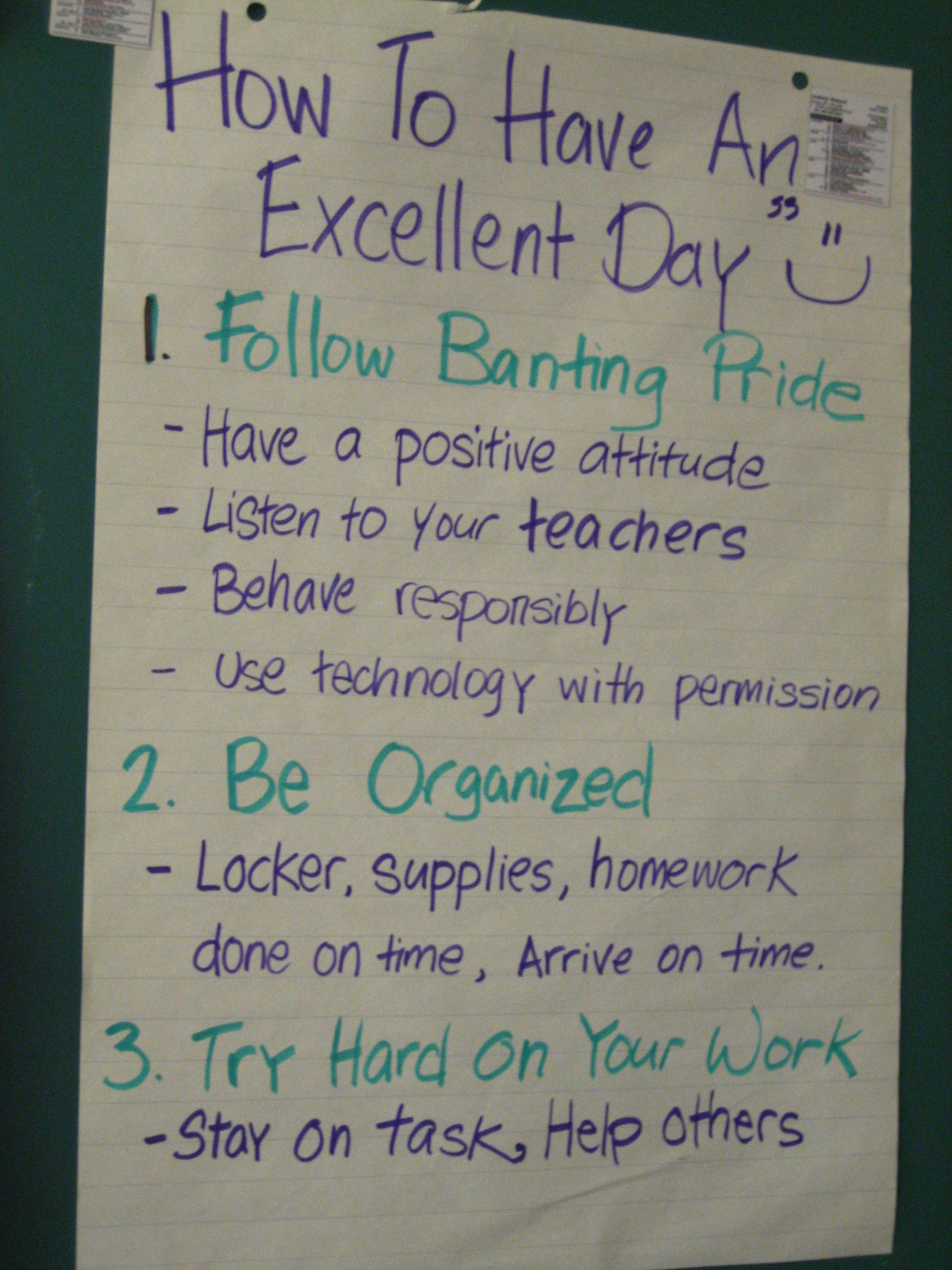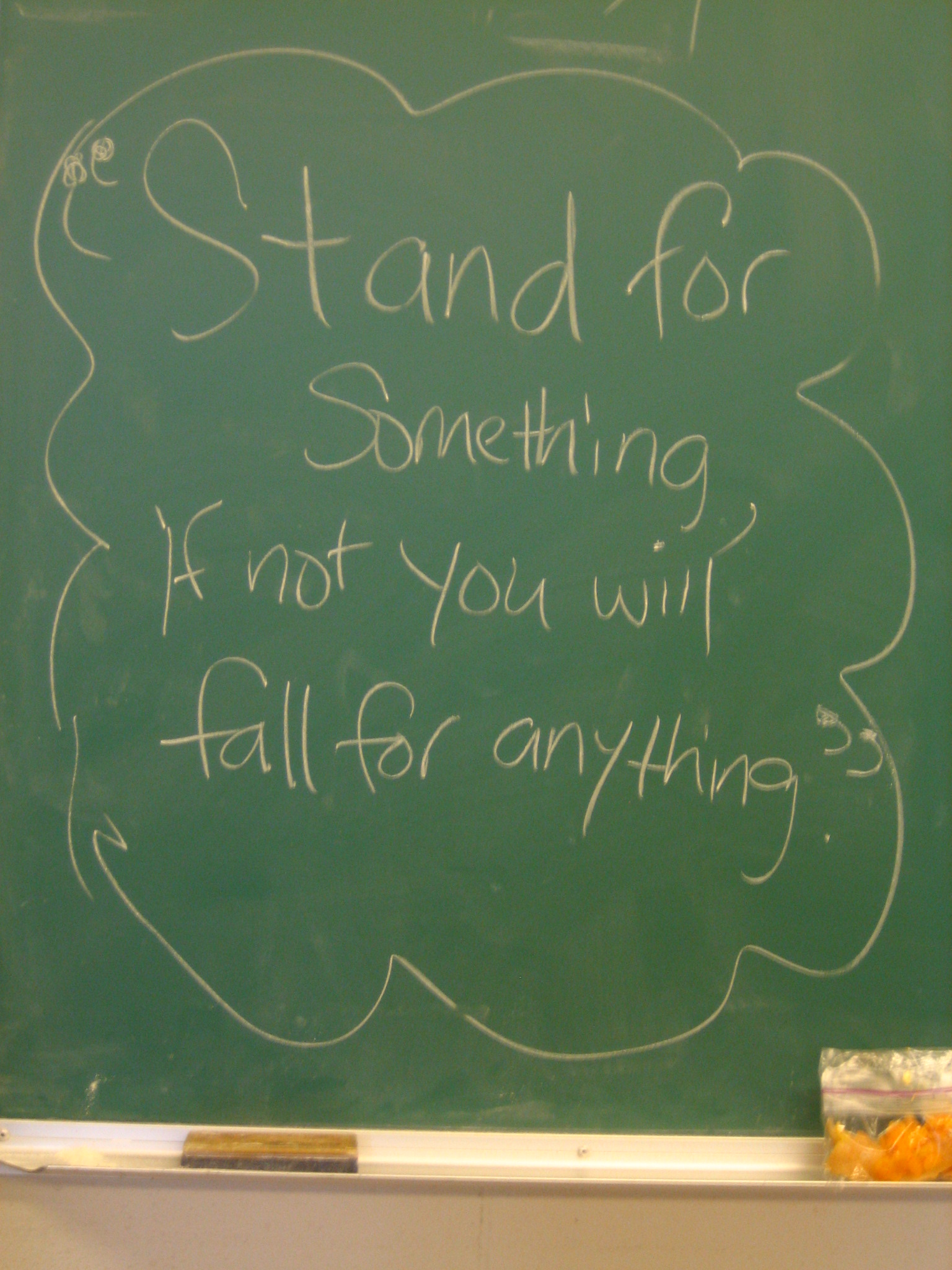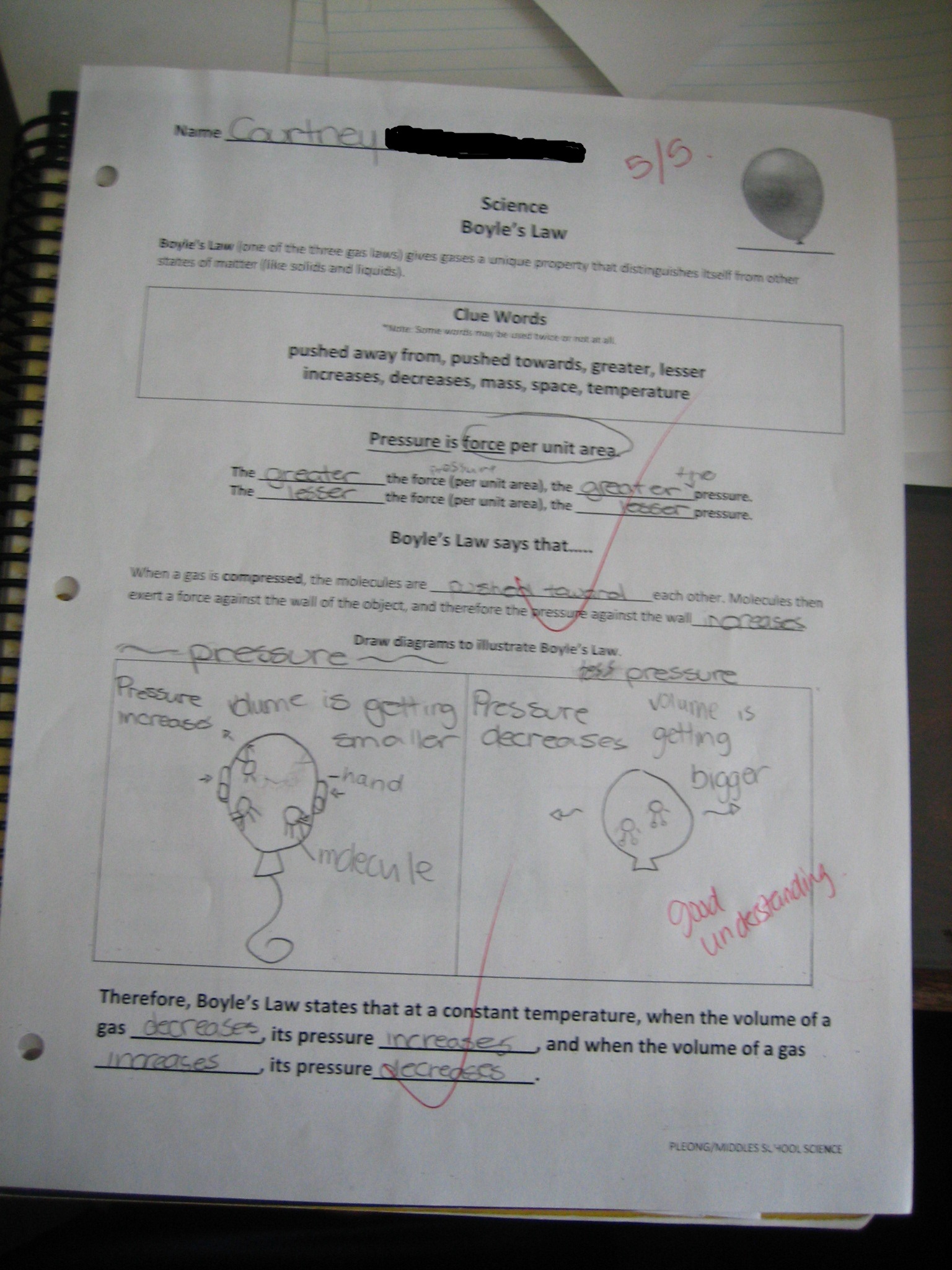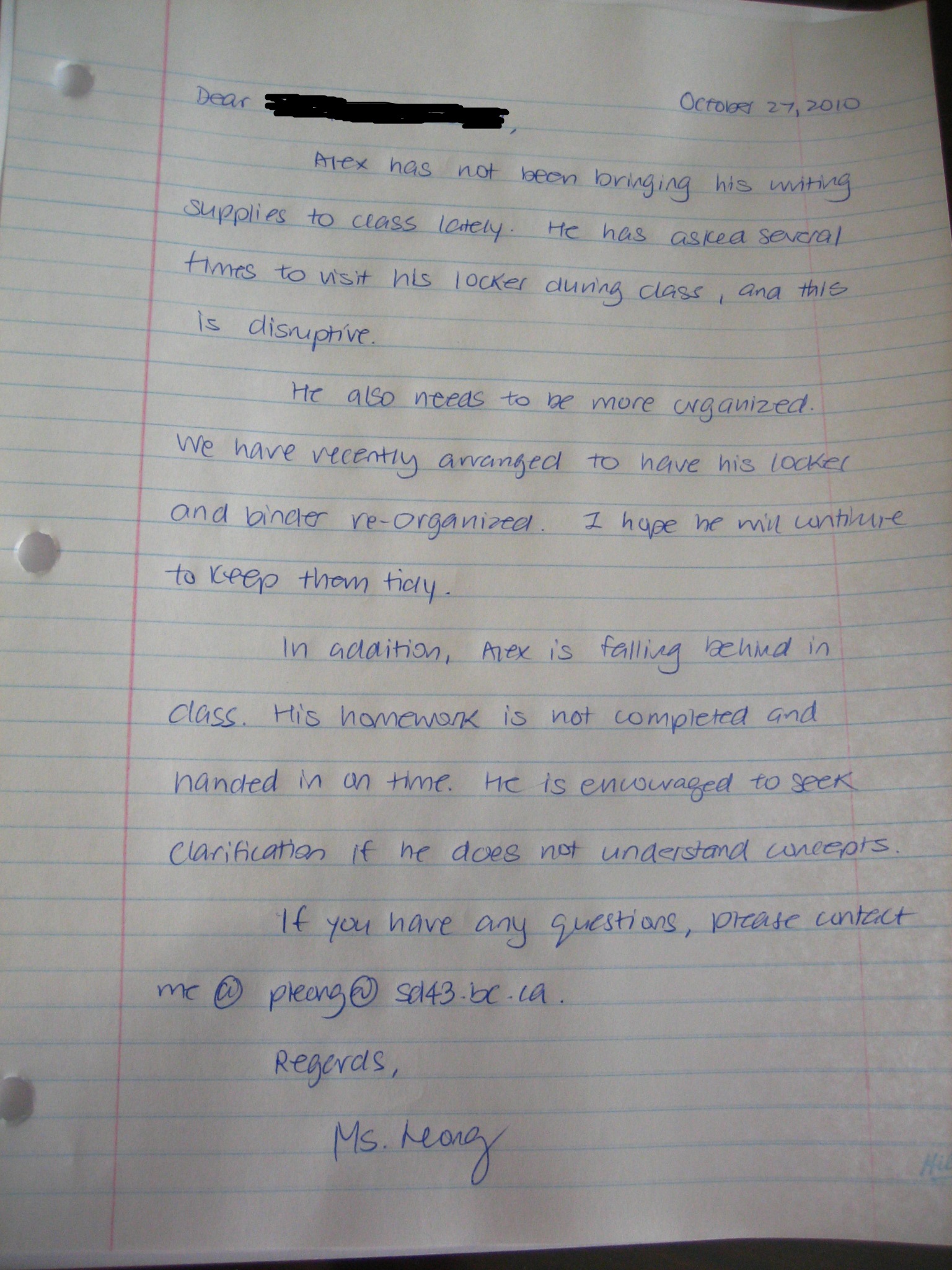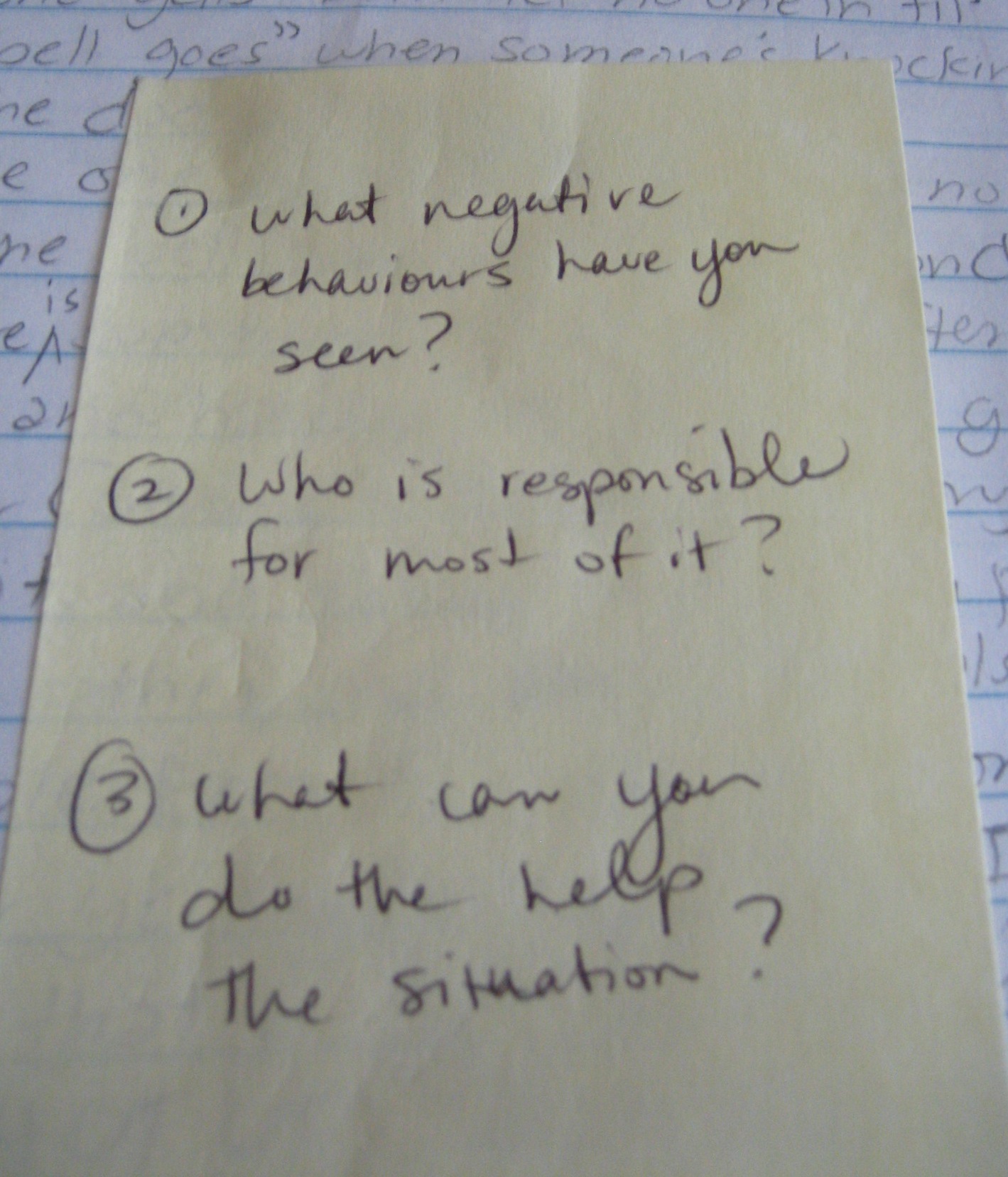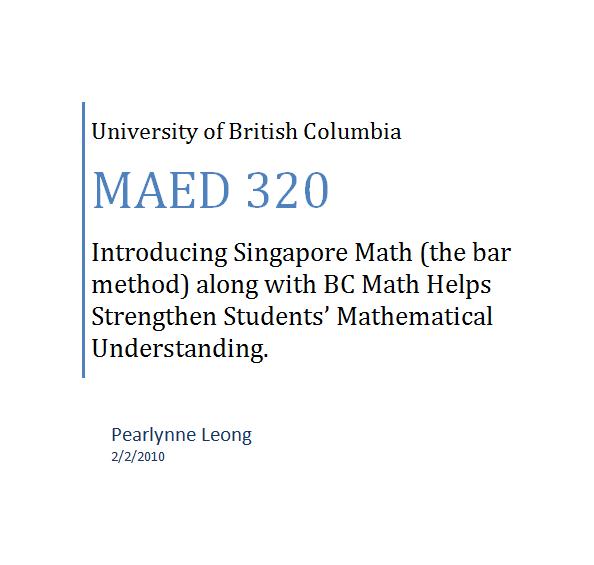T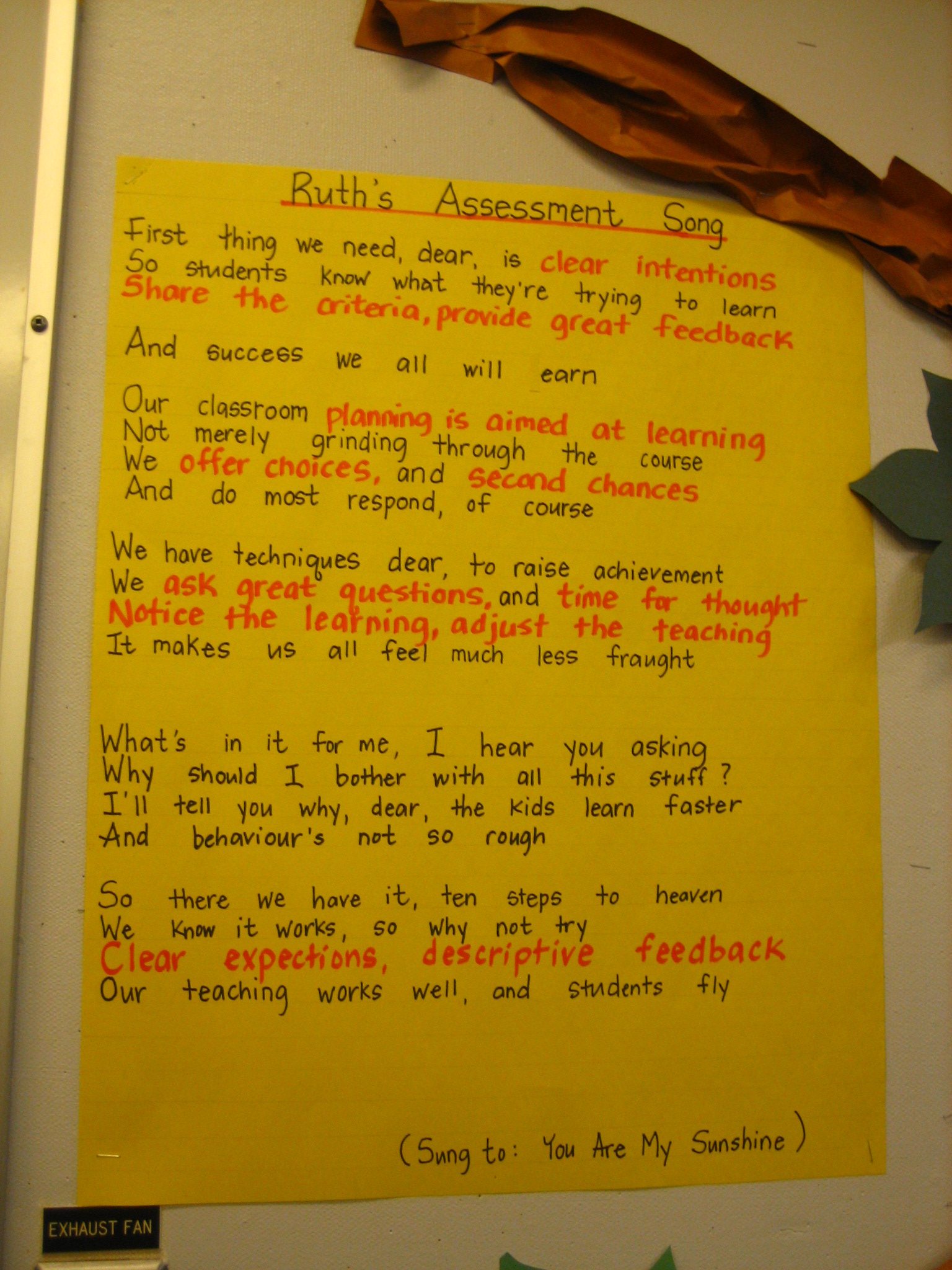
“Ruth’s Assessment Song” (Sung to “You are My Sunshine”)
“First thing we need, dear, is clear intentions
So students know what they’re trying to learn
Share the criteria, provide great feedback
And success we all will learn.
Our classroom planning is aimed at learning
Not merely grinding through the course
We offer choices, and second chances
And do most respond, of course
We have techniques dear, to raise achievement
We ask great questions, and time for thought
Notice the learning, adjust the teaching
It makes us all feel much less fraught
What’s in it for me, I hear you asking
Why should I bother with all this stuff?
I’ll tell you why, dear, the kids learn faster
And behaviour’s not so rough
So there we have it, ten steps to heaven
We know it works, so why not try
Clear expectations, descriptive feedback
Our teaching works well, and students fly”
This poem was posted up in our lunch room, the day after we had a school wide Pro-D.
I loved this poem as it reminded me that effective teaching requires more than rigidly following a lesson plan. Students all learn differently and as educators, we need to provide a variety of ways and many chances for students to learn.
Before I started my practicum, I was under the impression that I had to finish teaching all my units and lesson plans within a small window of time. Whether students thoroughly understood, seemed secondary to me.
During my practicum, I realized that teaching meant a lot more than following a prescribed unit/lesson plan. There were dynamic variables such as overall students’ learning abilities, class dynamics, school interruptions, etc., that I had to take into consideration, and to adjust my teaching accordingly.
More importantly, however, I realized that effective teaching also involved finding out how effective students are learning. This meant getting to know students, their learning background, giving lots of feedback to students (from my observations, exit slips, quizzes, etc), adapting and adjusting my lessons and unit plans accordingly, setting clear expectations by giving clear instructions and using the rubrics, asking thoughtful questions to further and challenge students’ understanding, and providing ample of opportunities for students to improve.
When I incorporated these strategies and adjusted my lessons in my practicum, I found my teaching style and my connections with students had improved dramatically.
As an educator, I look forward to developing and growing more in this area, for it is after all, all about helping students to learn better.



